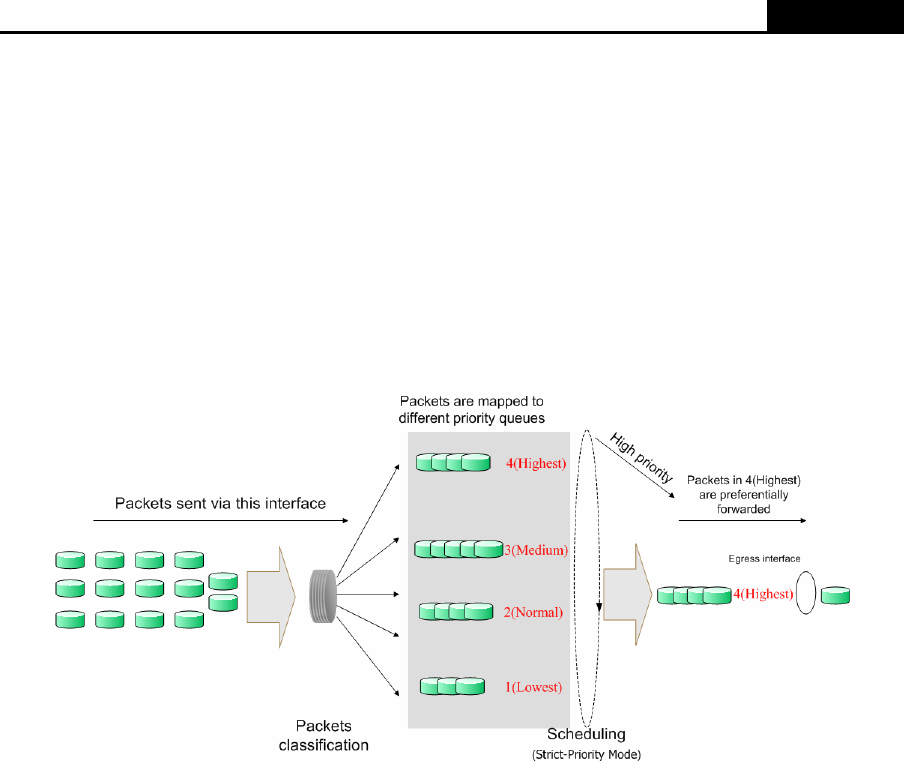
Easy Smart Configuration Utility
User Guide
Chapter 7 QoS
QoS (Quality of Service) functions to provide different quality of service for various network
applications and requirements and optimize the bandwidth resource distribution so as to provide a
network service experience of a better quality.
QoS
This switch classifies the ingress packets, maps the packets to four different priority queues and
then forwards the packets according to WRR scheduling algorithms to implement QoS function.
Figure 7-1 QoS Function
Traffic classification: Identifies packets conforming to certain characters according to certain
rules.
Map: This switch supports four priority queues. The priority queues are labeled as 1(Lowest),
2(Normal), 3(Medium) and 4(Highest), among them the bigger the value, the higher the
priority. The ingress packets are mapped to four different priority queues based on the QoS
modes. This switch implements two QoS modes based on port and on 802.1P.
Queue scheduling algorithm: When the network is congested, the problem that many packets
compete for resources must be solved, usually in the way of queue scheduling. In both
port-based and 802.1P QoS modes, this switch adopts WRR scheduling algorithm. In WRR
scheduling algorithm, packets in all the queues are sent in order based on the weight value
for each queue and every queue can be assured of a certain service time. The weight value
indicates the occupied proportion of the resource.
QoS Mode
This switch implements two QoS modes based on port and on 802.1P. By default, the QoS mode
based on port is enabled and the other one is optional.
33


















